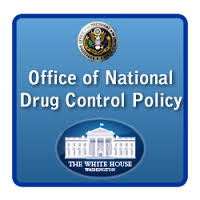… White House Responds to NY Times Support for Legaliation of Marijuana
The New York Times editorial board opinion in its Sunday, July 27, 2014 edition that the Federal government should legalize marijuana for adults aged 21 years and older. The New York Times editorial board compares Federal marijuana policy to the failure of alcohol prohibition and advocates for legalization based on the harm inflicted on young African American men who become involved in the criminal justice system as a result of marijuana possession charges. We agree that the criminal justice system is in need of reform and that disproportionality exists throughout the system. However, marijuana legalization is not the silver bullet solution to the issue.
In its argument, The New York Times editorial team failed to mention a cascade of public health problems associated with the increased availability of marijuana. While law enforcement will always play an important role in combating violent crime associated with the drug trade, the Obama Administration approaches substance use as a public health issue, not merely a criminal justice problem.
The editorial ignores the science and fails to address public health problems associated with increased marijuana use. Here are the facts:
- Marijuana use affects the developing brain. A recent study in Brain reveals impairment of the development of structures in some regions of the brain following prolonged marijuana use that began in adolescence or young adulthood.[1] Marijuana use is associated with cognitive impairment, including lower IQ among adult chronic users who began using marijuana at an early age.[2]
- Substance use in school age children has a detrimental effect on their academic achievement. Students who received earned D’s or F’s were more likely to be current users of marijuana than those who earned A’s (45% vs. 10%).[3]
- Marijuana is addictive. Estimates from research suggest that about 9 percent of users become addicted to marijuana. This number increases to about 17 percent among those who start young and to 25-50 percent among people who use marijuana daily.[4]
- Drugged driving is a threat to our roadways. Marijuana significantly impairs coordination and reaction time and is the illicit drug most frequently found to be involved in automobile accidents, including fatal ones.[5]
The editors of The New York Times may have valid concerns about disproportionality throughout our criminal justice system. But we as policymakers cannot ignore the basic scientific fact that marijuana is addictive and marijuana use has harmful consequences. Increased consumption leads to higher public health and financial costs for society. Addictive substances like alcohol and tobacco, which are legal and taxed, already result in much higher social costs than the revenue they generate. The cost to society of alcohol alone is estimated to be more than 15 times the revenue gained by its taxation.[6] For this reason, the Obama Administration and the Office of National Drug Control Policy remain committed to drug use prevention, treatment, support for recovery, and innovative criminal justice strategies to break the cycle of drug use and associated crime. This approach is helping improve public health and safety in communities across the United States.
Research also indicates that policies making drugs more available would likely not eliminate the black market or improve public health and safety, as promoted by marijuana advocates. Reports from the nonpartisan RAND Institute found that the potential economic benefits from legalization had been overstated, citing that:
- Marijuana legalization would not eliminate the black market for marijuana.[7]
- Dramatically lowered prices could mean substantially lower potential tax revenue for states.[8]
We are also keeping a close eye on the states of Washington and Colorado in conformance with the directive provided by the Attorney General in August 2013.
Any discussion on the issue should be guided by science and evidence, not ideology and wishful thinking. The Obama Administration continues to oppose the legalization of marijuana and other illegal drugs because it flies in the face of a public health approach to reducing drug use and its consequences. Our approach is founded on the understanding of addiction as a disease that can be successfully prevented and treated, and from which people can recover. We will continue to focus on genuine drug policy reform – a strategy that rejects extremes, and promotes expanded access to treatment, evidence-based prevention efforts, and alternatives to incarceration.
[1] Zalesky A, et al. 2012. Effect of long-term cannabis use on axonal fibre connectivity. Brain: A Journal of Neurology. 135 (7): 2245-2255.
[2] Meier et al., “Adolescent-onset cannabis and neuropsychological health.” Proceedings of the National Academy of Sciences.
[August 27, 2012]. Available: http://www.pnas.org/content/early/2012/08/22/1206820109
[3] Centers for Disease Control and Prevention, Department of Health and Human Services. Alcohol and Other Drug Use and Academic Achievement. 2010. Available at http://www.cdc.gov/healthyyouth/health_and_academics/pdf/alcohol_other_d…
[4] Anthony, JC; Warner, LA, Kessler, RC. 1994. Comparative epidemiology of dependence on tobacco, alcohol, controlled substances, and inhalants: Basic findings from the National Comorbidity Survey. Experimental and Clinical Psychopharmacology 2:244-268.
[5] Brady JE, Li G (2014) Trends in Alcohol and Other Drugs Detected in Fatally Injured Drivers in the United States, 199-2010,” American Journal of Epidemiology [Epub ahead of print].
[6] Ellen E. Bouchery, Henrick J. Harwood, Jeffrey J. Sacks, Carol J. Simon, Robert D. Brewer. Economic Costs of
Excessive Alcohol Consumption in the U.S., 2006. American Journal of Preventive Medicine – November 2011
(Vol. 41, Issue 5, Pages 516-524, DOI: 10.1016/j.amepre.2011.06.045). Available:
http://www.ajpmonline.org/article/S0749-3797(11)00538-1/fulltext xiii Kilmer, Beau, et al., Reducing Drug Trafficking Revenues and Viol
[7] Kilmer, Beau, et al., Reducing Drug Trafficking Revenues and Violence in Mexico: Would Legalizing Marijuana in California Help? RAND Corporation. [2010]. Available:
https://www.rand.org/content/dam/rand/pubs/occasional_papers/2010/RAND_OP325.pdf
[8] Kilmer, Beau, et al., Altered States? Assessing How Marijuana Legalization in California Could Influence Marijuana Consumption and Public Budgets. RAND Corporation. [2010]. Available:
https://www.rand.org/content/dam/rand/pubs/occasional_papers/2010/RAND_OP315.pdf







